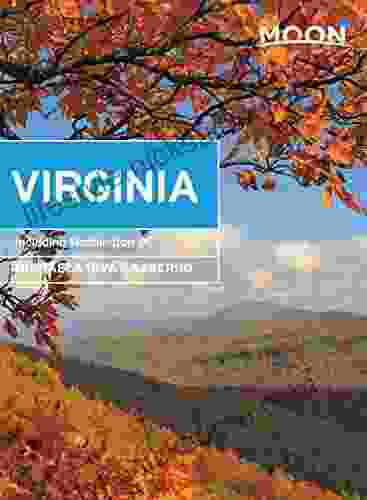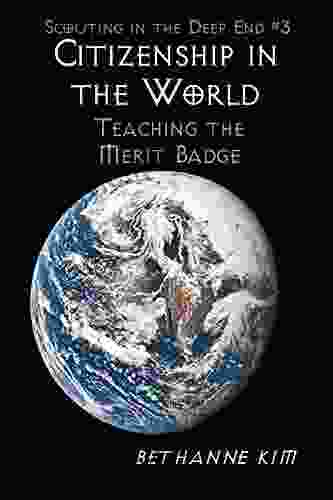How the Sahara Desert Came to Be: An In-Depth Exploration of Its Origins

The Sahara Desert, the largest hot desert in the world, is a vast and unforgiving landscape that has captivated the imaginations of explorers and scientists alike for centuries. But how did this immense expanse of sand and rock come to be? In this article, we will delve into the complex geological and climatic processes that shaped the Sahara, uncovering the secrets of its ancient origins.
The Proto-Sahara: A Lush and Verdant Past
Approximately 10,000 years ago, the Sahara was not the barren wasteland we know today. Instead, it was a land of lush grasslands, dotted with lakes and rivers. This verdant landscape was home to a diverse array of flora and fauna, including elephants, giraffes, and crocodiles.
4 out of 5
| Language | : | English |
| File size | : | 46408 KB |
| Text-to-Speech | : | Enabled |
| Screen Reader | : | Supported |
| Enhanced typesetting | : | Enabled |
| Word Wise | : | Enabled |
| Print length | : | 244 pages |
This fertile environment was a result of a different climate regime. During the African Humid Period, between 14,000 and 5,000 years ago, the Sahara received significantly more rainfall than it does today. This abundant moisture supported the growth of vegetation and created a thriving ecosystem.
Climate Change and Desiccation: The Transformation Begins
Around 5,000 years ago, the climate began to change. The African Humid Period ended, and with it, the abundant rainfall the Sahara had become accustomed to. As the precipitation decreased, the vegetation began to die off, and the lakes and rivers dried up.
This drying trend was exacerbated by other factors, such as the northward movement of the Intertropical Convergence Zone (ITCZ). The ITCZ is a band of heavy rainfall that shifts seasonally between the tropics. As the ITCZ moved away from the Sahara, the region became even more arid.
Wind and Sand: Shaping the Landscape
As the Sahara lost its vegetation, it became increasingly vulnerable to erosion. Strong winds picked up the loose sand and carried it across the landscape, depositing it in dunes and other aeolian features.
Over time, the wind-blown sand accumulated in vast ergs, or sand seas. These ergs cover a significant portion of the Sahara, and their shifting sands constantly reshape the desert landscape.
The Sahara Today: A Hyper-Arid Environment
Today, the Sahara Desert is one of the driest places on Earth. It receives an average of less than 1 inch of rain per year. This extreme aridity has led to the development of a hyper-arid climate, characterized by extreme temperatures, low humidity, and a lack of vegetation.
Despite its harsh conditions, the Sahara is home to a remarkable array of life. Specialized plants and animals have adapted to survive in this unforgiving environment, including desert foxes, sand vipers, and acacia trees.
The Sahara Desert is a testament to the power of geological and climatic forces. Once a lush and habitable land, it was transformed into the vast and unforgiving desert we know today through a combination of climate change, desiccation, and wind erosion.
Uncovering the origins of the Sahara Desert has not only shed light on the Earth's past, but also provided valuable insights into the potential impacts of climate change on modern ecosystems.
4 out of 5
| Language | : | English |
| File size | : | 46408 KB |
| Text-to-Speech | : | Enabled |
| Screen Reader | : | Supported |
| Enhanced typesetting | : | Enabled |
| Word Wise | : | Enabled |
| Print length | : | 244 pages |
Do you want to contribute by writing guest posts on this blog?
Please contact us and send us a resume of previous articles that you have written.
 Fiction
Fiction Non Fiction
Non Fiction Romance
Romance Mystery
Mystery Thriller
Thriller SciFi
SciFi Fantasy
Fantasy Horror
Horror Biography
Biography Selfhelp
Selfhelp Business
Business History
History Classics
Classics Poetry
Poetry Childrens
Childrens Young Adult
Young Adult Educational
Educational Cooking
Cooking Travel
Travel Lifestyle
Lifestyle Spirituality
Spirituality Health
Health Fitness
Fitness Technology
Technology Science
Science Arts
Arts Crafts
Crafts DIY
DIY Gardening
Gardening Petcare
Petcare Tracy Lorraine
Tracy Lorraine Kathleen M Stacy
Kathleen M Stacy Dolores Kong
Dolores Kong Adam Cort
Adam Cort Tom Taulli
Tom Taulli Eugene C Toy
Eugene C Toy Ruth M Tappen
Ruth M Tappen Helen E Fisher
Helen E Fisher Charles Hall
Charles Hall Robb Walsh
Robb Walsh Dom Amore
Dom Amore Christine Fanthome
Christine Fanthome Test Masters
Test Masters Sarah Sumbal
Sarah Sumbal Cole Hersowitz
Cole Hersowitz Larry K Brendtro
Larry K Brendtro Eric E Bowne
Eric E Bowne Bethanne Kim
Bethanne Kim Mark Worden
Mark Worden Diane Greer
Diane Greer Zeshan Qureshi
Zeshan Qureshi Sean Go
Sean Go Paul Schwartz
Paul Schwartz Anne Chambers
Anne Chambers William Rosen
William Rosen Lisa Maloney
Lisa Maloney Theresa Y Wee M D
Theresa Y Wee M D Iain Pardoe
Iain Pardoe Janet Engle
Janet Engle June Cl Tan
June Cl Tan Jessica Cunsolo
Jessica Cunsolo David Salsburg
David Salsburg Ryan Gray
Ryan Gray Donna Williams
Donna Williams Sian Warriner
Sian Warriner Tabitha Suzuma
Tabitha Suzuma Kasie West
Kasie West Nathan Belofsky
Nathan Belofsky James E Packer
James E Packer Mark Taylor
Mark Taylor George Bernard Shaw
George Bernard Shaw Tamora Pierce
Tamora Pierce Rick Stanton
Rick Stanton Dan Schlossberg
Dan Schlossberg Rob Fisher
Rob Fisher Sandra Luna Mccune
Sandra Luna Mccune Derrick Jensen
Derrick Jensen Catherine Dees
Catherine Dees Clancy Cavnar
Clancy Cavnar Shere Hite
Shere Hite Nikhil Bhardwaj
Nikhil Bhardwaj Kezia Endsley
Kezia Endsley Heather Macfadyen
Heather Macfadyen Amber Foster
Amber Foster Amby Cooper
Amby Cooper Richard Cohen
Richard Cohen Vicki Hearne
Vicki Hearne Roman Gelperin
Roman Gelperin Peter Larson
Peter Larson Thomas J Whalen
Thomas J Whalen Stanley I Greenspan
Stanley I Greenspan Brian Pace
Brian Pace Amber Smith
Amber Smith Jonathan Bartlett
Jonathan Bartlett Kris Leonard
Kris Leonard Michael Abayomi
Michael Abayomi Victoria Richards
Victoria Richards Joe Nickell
Joe Nickell Joseph P Weir
Joseph P Weir Nicholas A Christakis
Nicholas A Christakis Saleh Alkhalifa
Saleh Alkhalifa Amelia Edith Huddleston Barr
Amelia Edith Huddleston Barr Courtney Defeo
Courtney Defeo Thom Hartmann
Thom Hartmann Deborah Lipsky
Deborah Lipsky Cookie O Gorman
Cookie O Gorman Amelia Freer
Amelia Freer Grant Dever
Grant Dever Jd Mader
Jd Mader Michael Parker Pearson
Michael Parker Pearson Ignatius Donnelly
Ignatius Donnelly Wendy Margolis
Wendy Margolis Michaela Riva Gaaserud
Michaela Riva Gaaserud Johan Norberg
Johan Norberg Gerald Corey
Gerald Corey Oscar Baechler
Oscar Baechler Amiee Mueller
Amiee Mueller Kenneth P Stephens
Kenneth P Stephens Lady Antiva
Lady Antiva Rob Antoun
Rob Antoun Donovan Hohn
Donovan Hohn Amelia Parker
Amelia Parker David Burch
David Burch Jonathan Law
Jonathan Law Eugenia Viti
Eugenia Viti J Stephen Jones
J Stephen Jones Julie Caplin
Julie Caplin Julie Mosier
Julie Mosier Kate Tietje
Kate Tietje Helena P Blavasky
Helena P Blavasky A Sorority Of Mothers
A Sorority Of Mothers Ashley Scott
Ashley Scott Christina Kamp
Christina Kamp Maria Youtman
Maria Youtman Erica T Lehrer
Erica T Lehrer Wade Rouse
Wade Rouse John A Buehrens
John A Buehrens Alan I Marcus
Alan I Marcus Amrita Pande
Amrita Pande Marshall Goldsmith
Marshall Goldsmith Gal Dem
Gal Dem Michael Winkelman
Michael Winkelman Swede Burns
Swede Burns Dima Zales
Dima Zales Meikang Qiu
Meikang Qiu Joseph Mcmoneagle
Joseph Mcmoneagle Paul Kockelman
Paul Kockelman Robyn Davidson
Robyn Davidson Topher Donahue
Topher Donahue Rich Rousseau
Rich Rousseau Nina Freudenberger
Nina Freudenberger William Bohan
William Bohan Joe Dan Lowry
Joe Dan Lowry Camille Glenn
Camille Glenn The 60 Minutes Summary
The 60 Minutes Summary Tim Hornbaker
Tim Hornbaker Trent Shelton
Trent Shelton Theresa I Soto
Theresa I Soto Chris Irons
Chris Irons Robert A Weinberg
Robert A Weinberg Dan Abnett
Dan Abnett Brittany Clair
Brittany Clair Amber Lia
Amber Lia Bruce Dowbiggin
Bruce Dowbiggin Karen Deerwester
Karen Deerwester Dana Obleman
Dana Obleman Frank Nappi
Frank Nappi Kate Fox
Kate Fox Dmv Test Bank
Dmv Test Bank Jonathon Miller Weisberger
Jonathon Miller Weisberger Jenni Hicks
Jenni Hicks Jocelyn Goodwin
Jocelyn Goodwin Anthony Horowitz
Anthony Horowitz David Elkington
David Elkington Susanna Heli
Susanna Heli Liz Fosslien
Liz Fosslien James W Williams
James W Williams Terry Wieland
Terry Wieland Amir Alexander
Amir Alexander Dave Hanson
Dave Hanson Christopher Cousteau
Christopher Cousteau Devin Olsen
Devin Olsen Angela Moore
Angela Moore Ned Seaton
Ned Seaton John Bingham
John Bingham Amy Blakeslee
Amy Blakeslee Chad Ford
Chad Ford Jack Nisbet
Jack Nisbet Lars Andersen
Lars Andersen Amy Bizzarri
Amy Bizzarri Leslie Sansone
Leslie Sansone Mark W T Harvey
Mark W T Harvey Chad Starkey
Chad Starkey Paul Wieland
Paul Wieland Harley Reid
Harley Reid Sandra T Barnes
Sandra T Barnes Erin Chack
Erin Chack Chloe Gong
Chloe Gong Vinod Kumar Khanna
Vinod Kumar Khanna Candida Lawrence
Candida Lawrence Sean Gibson
Sean Gibson Jeff Gaudette
Jeff Gaudette Amber O Neal Johnston
Amber O Neal Johnston Kathleen Glasgow
Kathleen Glasgow Jenny Landreth
Jenny Landreth Alex Stone
Alex Stone Bill Carter
Bill Carter David Ranney
David Ranney Nicholeen Peck
Nicholeen Peck Stephenie Meyer
Stephenie Meyer Ruth Nestvold
Ruth Nestvold Nick Kolenda
Nick Kolenda Tavi Gevinson
Tavi Gevinson Don Orwell
Don Orwell Jennifer Margulis
Jennifer Margulis Joseph Conrad
Joseph Conrad Amy Baldwin
Amy Baldwin John Mcpherson
John Mcpherson Randall E Schumacker
Randall E Schumacker Brendan Leonard
Brendan Leonard Marit Weisenberg
Marit Weisenberg Matthew L Martin
Matthew L Martin Krystal Sutherland
Krystal Sutherland Clotaire Rapaille
Clotaire Rapaille Amy Brown
Amy Brown Marina Robb
Marina Robb Richard Wagamese
Richard Wagamese Rosalind Wiseman
Rosalind Wiseman Don Stradley
Don Stradley Amira Mikhail
Amira Mikhail Gary Wiener
Gary Wiener Amy Camp
Amy Camp K F Breene
K F Breene Jack Tupp
Jack Tupp Md Mahady Hasan
Md Mahady Hasan Kathy Spratt
Kathy Spratt William G Dever
William G Dever Andy Couturier
Andy Couturier Byron Nelson
Byron Nelson Marisa Anne Bass
Marisa Anne Bass Gina Chen
Gina Chen Kumo Kagyu
Kumo Kagyu Julie Barlow
Julie Barlow Pamela Lynn
Pamela Lynn American Baseball Coaches Association
American Baseball Coaches Association Jean Christie Ashmore
Jean Christie Ashmore Mark Turley
Mark Turley Naomi Oreskes
Naomi Oreskes Stanley J Farlow
Stanley J Farlow Steven Charleston
Steven Charleston Timothy Malcolm
Timothy Malcolm David Grinspoon
David Grinspoon Jean Rose
Jean Rose Mitt Romney
Mitt Romney Douglas Wilson
Douglas Wilson Sarah Dessen
Sarah Dessen Cynthia Gabriel
Cynthia Gabriel Tanya Turner
Tanya Turner Stephen Goodwin
Stephen Goodwin Robert Melillo
Robert Melillo Michael Ondaatje
Michael Ondaatje C L Simchick
C L Simchick Josiah Hesse
Josiah Hesse Spike Dykes
Spike Dykes William Glasser M D
William Glasser M D Erik Qualman
Erik Qualman Desi Northup
Desi Northup Christopher E Larsen
Christopher E Larsen Stephen Walker
Stephen Walker Craig Larman
Craig Larman Umer W
Umer W Amy Mccready
Amy Mccready Sterling Test Prep
Sterling Test Prep Rosanna Davison
Rosanna Davison L Frank Baum
L Frank Baum Denise Ni
Denise Ni Philip Gibson
Philip Gibson Lisa Zimmer Hatch
Lisa Zimmer Hatch Jon Bonnell
Jon Bonnell Joseph Wayne Smith
Joseph Wayne Smith Ned Vizzini
Ned Vizzini Paul Oliver
Paul Oliver Philippa Langley
Philippa Langley Martin Pollizotto
Martin Pollizotto Chris Carlsson
Chris Carlsson Joellen Patterson
Joellen Patterson Temple Grandin
Temple Grandin Jessica Hatcher Moore
Jessica Hatcher Moore Rose Mannering
Rose Mannering Jan E Stets
Jan E Stets Rachel Gurevich
Rachel Gurevich Lizabeth Hardman
Lizabeth Hardman Doug Peterson
Doug Peterson Buck Tilton
Buck Tilton Ananda Lowe
Ananda Lowe Don Bowers
Don Bowers Michael Cosgrove
Michael Cosgrove Amie Lands
Amie Lands Ruta Nonacs
Ruta Nonacs P Aarne Vesilind
P Aarne Vesilind Sarah Morgan Haydock
Sarah Morgan Haydock Susan White
Susan White Melody Schreiber
Melody Schreiber Kate Parham Kordsmeier
Kate Parham Kordsmeier Tom Deck
Tom Deck Mike Adamick
Mike Adamick Jake Maddox
Jake Maddox Michelle Newhart
Michelle Newhart Patricia L Papernow
Patricia L Papernow Joseph Klaits
Joseph Klaits Erika Napoletano
Erika Napoletano Toni Tone
Toni Tone Emma Mae Jenkins
Emma Mae Jenkins Dr Elizabeth Cherevaty Nd Rac
Dr Elizabeth Cherevaty Nd Rac Joe Dante
Joe Dante Theodore Sider
Theodore Sider John Jacobs
John Jacobs Kevin Stiegelmaier
Kevin Stiegelmaier Ana And Jack Hicks
Ana And Jack Hicks Sarah Woodbury
Sarah Woodbury Jim Santos
Jim Santos Sarah J Maas
Sarah J Maas Alexandrea Weis
Alexandrea Weis Muhammad Vandestra
Muhammad Vandestra John L Field
John L Field Md Rezowan Ahmed
Md Rezowan Ahmed Antonio R Damasio
Antonio R Damasio Rodney M Howard Browne
Rodney M Howard Browne Brian Kateman
Brian Kateman Paul Dickson
Paul Dickson Guillaume Haeringer
Guillaume Haeringer David Guymer
David Guymer Victor J Stenger
Victor J Stenger Anna B Doe
Anna B Doe Eric Tyndall
Eric Tyndall Steven C Hayes
Steven C Hayes Jack Ewing
Jack Ewing Katherine Kurtz
Katherine Kurtz Michael R Poll
Michael R Poll Ray Mancini
Ray Mancini Tahlia Kirk
Tahlia Kirk Mariano Anaya
Mariano Anaya J L Weil
J L Weil Carlo Buzzichelli
Carlo Buzzichelli Mac Fortner
Mac Fortner C W Lockhart
C W Lockhart Django Paris
Django Paris Jack Freeman
Jack Freeman Glenn Stout
Glenn Stout Joe E Harvey
Joe E Harvey Cathy Williams
Cathy Williams Charles Thompson
Charles Thompson Wolf Moon
Wolf Moon Ronda Rousey
Ronda Rousey Tijan
Tijan Gia Giasullo
Gia Giasullo Frederick Lenz
Frederick Lenz Jeremy J Baumberg
Jeremy J Baumberg Jason Thompson
Jason Thompson Malba Tahan
Malba Tahan Marco Ferrero
Marco Ferrero Amie Kaufman
Amie Kaufman Pav Bryan
Pav Bryan Sonia Hartl
Sonia Hartl Sue Monk Kidd
Sue Monk Kidd Peter Hayes
Peter Hayes Joel Cotton
Joel Cotton Dr Scott A Johnson
Dr Scott A Johnson Victoria Wood
Victoria Wood Amante P Marinas
Amante P Marinas Therese A Rando
Therese A Rando Anthony Haynes
Anthony Haynes Deborah Vinall Psyd Lmft
Deborah Vinall Psyd Lmft Robert W D Ball
Robert W D Ball David Yoon
David Yoon Laura Slinn
Laura Slinn Trevor Day
Trevor Day Cordelia K Castel
Cordelia K Castel Andrey Ryanskiy
Andrey Ryanskiy Norman Doidge
Norman Doidge Redmond O Hanlon
Redmond O Hanlon Alan Margot
Alan Margot Don Mann
Don Mann Kathy A Zahler
Kathy A Zahler Holly Herrick
Holly Herrick Mark Stallard
Mark Stallard Paul Kaplowitz
Paul Kaplowitz Fred Pyrczak
Fred Pyrczak Elizabeth Lim
Elizabeth Lim Vince Kotchian
Vince Kotchian Ellie Wood
Ellie Wood Jason Borte
Jason Borte James P Kelly
James P Kelly Sharon K Zumbrunn
Sharon K Zumbrunn Catherine Ryan Gregory
Catherine Ryan Gregory H Bedford Jones
H Bedford Jones Jeff Martone
Jeff Martone Josh Taylor
Josh Taylor Steve Greenberg
Steve Greenberg Michael Reichert
Michael Reichert Ken Chaddock
Ken Chaddock Jan Marie Mueller
Jan Marie MuellerK D
 Benjamin Jelen
Benjamin Jelen Summer Michaud Skog
Summer Michaud Skog Nisha Garg
Nisha Garg Hadley Wickham
Hadley Wickham Laini Taylor
Laini Taylor E T Bryant
E T Bryant Eric Zweig
Eric Zweig Bridget Ericsson
Bridget Ericsson Pinky Mckay
Pinky Mckay Charles J Alsheimer
Charles J Alsheimer Dr Bob Rotella
Dr Bob Rotella Traci Gormley
Traci Gormley Derek Thompson
Derek Thompson John Ferrell
John Ferrell Heidi J Larson
Heidi J Larson Gail Maccoll
Gail Maccoll Laekan Zea Kemp
Laekan Zea Kemp Joan Freeman
Joan Freeman Jeffrey Steadman
Jeffrey Steadman Cheri Rae
Cheri Rae Joseph Howse
Joseph Howse Randy Schultz
Randy Schultz Suzanne Stabile
Suzanne Stabile Andy Hunt
Andy Hunt Julie Schacht Sway
Julie Schacht Sway Jerry D Moore
Jerry D Moore K M Shea
K M Shea Amy Adele Hasinoff
Amy Adele Hasinoff Sheri Van Dijk
Sheri Van Dijk Deborah J Rumsey
Deborah J Rumsey Jeanne Ryan
Jeanne Ryan Henry A Zumbrun 2
Henry A Zumbrun 2 Jack Falla
Jack Falla Reinhold Messner
Reinhold Messner Danny Dreyer
Danny Dreyer Amy B Middleman
Amy B Middleman Stephen Barr
Stephen Barr Silvia Botros
Silvia Botros Tim Marshall
Tim Marshall Elise Christie
Elise Christie Amara Charles
Amara Charles Martin Williams
Martin Williams Alex Polyakov
Alex Polyakov Shalabh Aggarwal
Shalabh Aggarwal Laurie A Watkins
Laurie A Watkins Louise Bates Ames
Louise Bates Ames Howard J Meditz
Howard J Meditz Amy Bleuel
Amy Bleuel Jameson M Wetmore
Jameson M Wetmore John Maxwell Wood
John Maxwell Wood Jayson Gaddis
Jayson Gaddis Vivian Vande Velde
Vivian Vande Velde Elizabeth S Gilbert
Elizabeth S Gilbert Eric T Knight
Eric T Knight Nikala Smith
Nikala Smith Amy Perry
Amy Perry Rick Deutsch
Rick Deutsch Warren B Powell
Warren B Powell Amber Zygutis
Amber Zygutis Cody Monk
Cody Monk Josephine Atluri
Josephine Atluri Stephen J Collier
Stephen J Collier Neville Goddard
Neville Goddard Shannon O Bourne
Shannon O Bourne Sheena Johnstone
Sheena Johnstone Andy Singleton
Andy Singleton Shanna Cunning
Shanna Cunning James Mullaney
James Mullaney Tom Colicchio
Tom Colicchio William Stillman
William Stillman Paul Graham
Paul Graham Edward J Denecke
Edward J Denecke Peter Worley
Peter Worley Kyle Hunt
Kyle Hunt Tom Patri
Tom Patri Autumn Jordon
Autumn Jordon Jack Weatherford
Jack Weatherford Kristine Kathryn Rusch
Kristine Kathryn Rusch Tyler Simmons
Tyler Simmons J Marin Younker
J Marin Younker Jennifer S Kelly
Jennifer S Kelly Jacob Bronowski
Jacob Bronowski John Lukacs
John Lukacs Claudia J Carr
Claudia J Carr Patrick O Sullivan
Patrick O Sullivan Art Star
Art Star Pico Iyer
Pico Iyer Christopher Harlan
Christopher Harlan Stephen M Barr
Stephen M Barr Sandra Bardwell
Sandra Bardwell American Math Academy
American Math Academy Isabella Krystynek
Isabella Krystynek Valerie Bass
Valerie Bass Matthew Lombardi
Matthew Lombardi Amber Lee Sellers
Amber Lee Sellers Arlene Blum
Arlene Blum Kresley Cole
Kresley Cole Brian Klaas
Brian Klaas Amit Saha
Amit Saha Shaun Gallagher
Shaun Gallagher American Psychological Association
American Psychological Association Torey L Hayden
Torey L Hayden Garrett M Fitzmaurice
Garrett M Fitzmaurice Kieron Gillen
Kieron Gillen Jean Van T Hul
Jean Van T Hul Candy Verney
Candy Verney
Light bulbAdvertise smarter! Our strategic ad space ensures maximum exposure. Reserve your spot today!

 Ibrahim BlairUnveiling the Power of Command Line Applications in Go: A Comprehensive Guide
Ibrahim BlairUnveiling the Power of Command Line Applications in Go: A Comprehensive Guide Ray BlairFollow ·12k
Ray BlairFollow ·12k Dennis HayesFollow ·16.3k
Dennis HayesFollow ·16.3k Jake CarterFollow ·2.2k
Jake CarterFollow ·2.2k Truman CapoteFollow ·7.8k
Truman CapoteFollow ·7.8k Elliott CarterFollow ·4.9k
Elliott CarterFollow ·4.9k Max TurnerFollow ·2.7k
Max TurnerFollow ·2.7k Gordon CoxFollow ·2.6k
Gordon CoxFollow ·2.6k Tyrone PowellFollow ·18.4k
Tyrone PowellFollow ·18.4k

 Ira Cox
Ira CoxUnveiling the Hidden Gem: Moon, Virginia - A Washington...
Nestled within the picturesque...

 Jorge Luis Borges
Jorge Luis BorgesThe Ultimate Survivalist's Medical Guide: A Comprehensive...
In the realm of...

 Henry Green
Henry GreenDavid Douglas: Exploring the Natural History of the...
David Douglas was a...

 Eric Hayes
Eric HayesUnderstanding Citizenship in a Globalized World: A...
Citizenship is a complex and multifaceted...

 Will Ward
Will WardUnveiling Research Real Talk: Navigating the Labyrinth of...
Research, the...
4 out of 5
| Language | : | English |
| File size | : | 46408 KB |
| Text-to-Speech | : | Enabled |
| Screen Reader | : | Supported |
| Enhanced typesetting | : | Enabled |
| Word Wise | : | Enabled |
| Print length | : | 244 pages |












